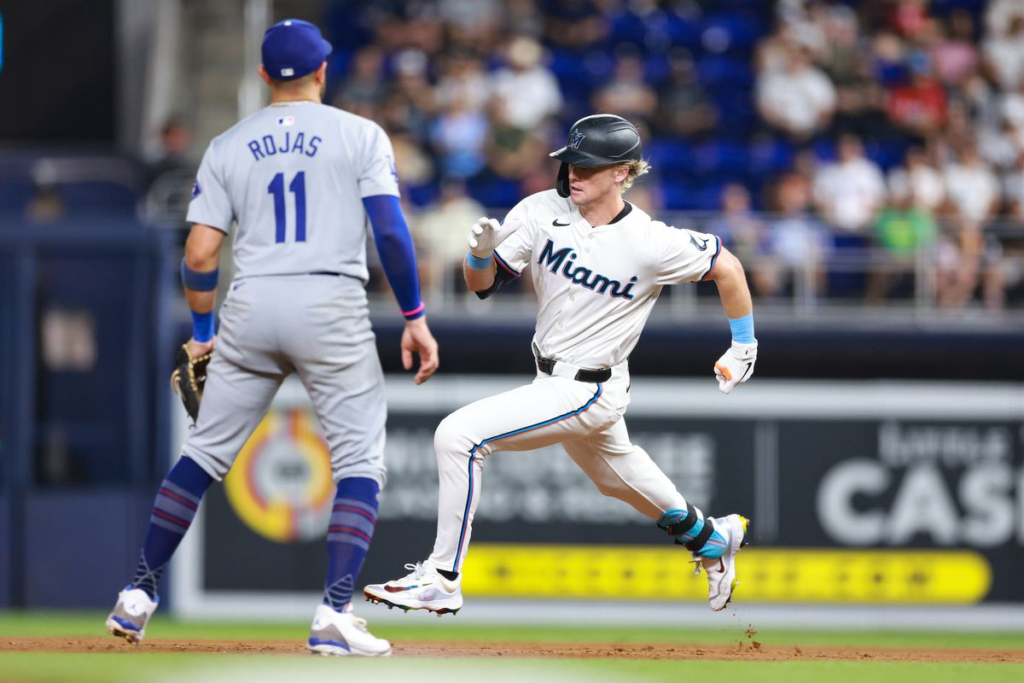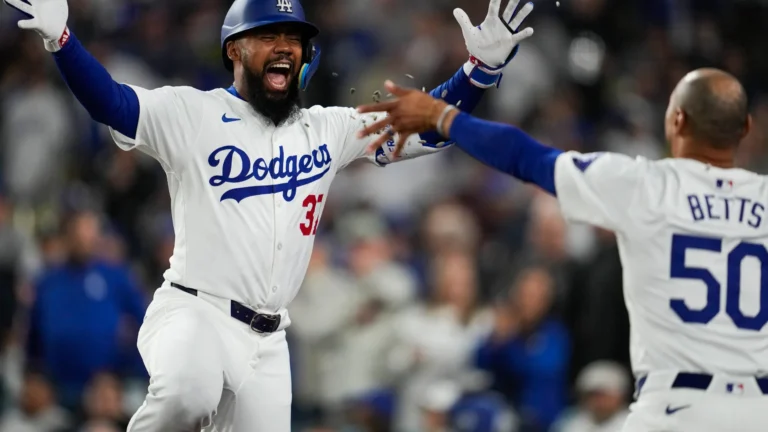Introduction to Dodgers vs Miami Marlins Match
The match between the Los Angeles Dodgers and the Miami Marlins holds significant relevance in the current baseball season. As two teams positioned within the Major League Baseball (MLB) hierarchy, their encounters are not only pivotal for their respective standings but also serve as exciting spectacles for fans and analysts alike. The Dodgers, with their storied franchise history, aim to assert their dominance, while the Marlins, known for their resilience, look to establish their competitiveness in critical games. As the season progresses, each match-up gains importance; hence, analyzing the player stats from these encounters can provide valuable insights into the teams’ performances.
Historically, the Dodgers and Marlins have faced each other numerous times, and their past encounters can provide context to their current line-ups and strategies. Whether it’s a hard-fought game or a battle of wits, each meeting contributes to the ongoing rivalry and ultimately influences the teams’ aspirations for playoffs and championships. Understanding previous matchups enhances our appreciation for player stats, as individual performances in past games may replicate or diverge in future meetings.
Player analytics play a vital role in assessing how games unfold, as statistics serve as a reliable indicator of performance. For instance, factors such as batting averages, earned run averages, and the number of home runs hit contribute to a deeper understanding of how the Dodgers and Marlins’ players can influence the game’s outcome. As we delve into the player statistics of the latest Dodgers vs Miami Marlins match, the significance of these metrics will become evident, demonstrating how individual and team performances combine to shape the season’s narrative.
Key Player Stats: Dodgers Key Performers
The Los Angeles Dodgers showcased a formidable lineup during their recent encounter with the Miami Marlins, illustrating why they are perennial contenders in Major League Baseball. Several key performers stood out, with their statistics providing insight into both individual contributions and the overall team dynamics. A close examination of these dodgers vs miami marlins match player stats reveals a lot about the game’s outcome.
One of the standout players was the Dodgers’ star slugger, who finished the match with a batting average of .340, contributing significantly with multiple hits. His ability to reach base consistently elevated his on-base percentage to an impressive .420. Additionally, two home runs in this game evidenced his power at the plate, bringing his season total to a staggering 30 home runs. These statistics not only highlight his impact on the match but also reflect his recent form, showcasing how critical he has been in previous games against the Marlins.
Moreover, the Dodgers’ middle infielder displayed exceptional skills with a clutch performance, ending the game with three RBIs that were instrumental in driving the team towards victory. His batting average for the season stood at .315, and against the Marlins, he has historically performed well, evident from his career stats suggesting an upward trend each season. This analysis of dodgers vs miami marlins match player stats emphasizes his role in clutch situations, further solidifying his standing as a key player for the team.
Each of these statistics articulates not just the players’ current forms but also their historical performances against the Marlins. Understanding these dynamics can offer fans and analysts valuable perspectives on how individual players can influence games through both their evident talent and strategic execution on the field.

Key Player Stats: Miami Marlins Key Performers
The Miami Marlins showcased several key players during their recent matchup against the Los Angeles Dodgers. Understanding the performance of these athletes is crucial for evaluating the outcome of the game and analyzing player contributions. Key statistics such as batting averages, strikeouts, and walks offer insights into their effectiveness on the field.
One prominent figure in this game was the Marlins’ leading hitter, whose batting average has consistently hovered around .300 throughout the season. This player’s ability to get on base was evident as they recorded multiple hits during the match, further solidifying their reputation as a reliable performer. Furthermore, this player has a historical context of facing the Dodgers, having averaged .350 against them in previous encounters. This demonstrates a consistent ability to challenge and overcome the Dodgers’ pitching staff.
Another noteworthy performer was the Marlins’ starting pitcher, who entered the match with an impressive strikeout rate of 9.0 K/9. His performance against the Dodgers this season has yielded favorable results, with a tendency to exert control over the game, including minimizing walks and maximizing strikeouts. This encouraged defensive plays and undoubtedly impacted the overall dynamic of the contest.
Additionally, the Marlins’ power hitter, known for recent home runs, had the potential to shift momentum at any moment. This player’s slugging percentage has been on the rise, contributing to an exciting offensive structure the team has developed. Statistically, his encounters against the Dodgers show promise, having homered in previous games, thereby imposing a threat with each at-bat.
In summary, the player statistics for the Miami Marlins against the Dodgers illustrate the strengths and recent performances of their key athletes. Such data enhances the understanding of how these players influence the game dynamics and their potential impact in future matchups.
Comparative Analysis and Conclusion
The matchup between the Dodgers and the Miami Marlins presents a rich tapestry of player statistics that not only reflect the performances during the game but also offer insights into each team’s potential for future contests. Analyzing the dodgers vs miami marlins match player stats reveals some notable trends and discrepancies. One significant observation is the contrasting batting averages of key players from both teams. While the Dodgers boasted several players achieving high batting averages, the Marlins displayed a more modest offensive output, particularly against high-caliber pitchers.
Furthermore, the pitching stats indicate a sharp divergence in effectiveness. The Dodgers’ starting pitchers often registered higher strikeout rates, showing their capability in overpowering hitters, while the Marlins’ pitchers struggled with consistency, allowing more earned runs. This difference in performance was undeniably a crucial factor influencing the game’s ultimate outcome. Defense also played a vital role; glossing over fielding errors could skew our interpretation of the statistics. The Marlins’ defensive stats suggested an instance of vulnerability, which the Dodgers capitalized on effectively.
Looking ahead, these player statistics hint at potential strategies for future matchups. For instance, the Dodgers might exploit the Marlins’ weaker batting lineups against left-handed pitchers, whereas Miami may need to bolster their pitching rotation or focus on enhancing their fielding skills. Teams often make adjustments based on historical performance metrics to ensure competitive parity.
In conclusion, the player stats from the dodgers vs miami marlins match not only illuminate the essence of that particular game but also lay the groundwork for how both teams may approach future encounters. The significance of these statistics in the greater scheme of the baseball season cannot be overstated, as they provide the framework for tactical decisions and player development in the pursuit of success.
You May Also Read:
